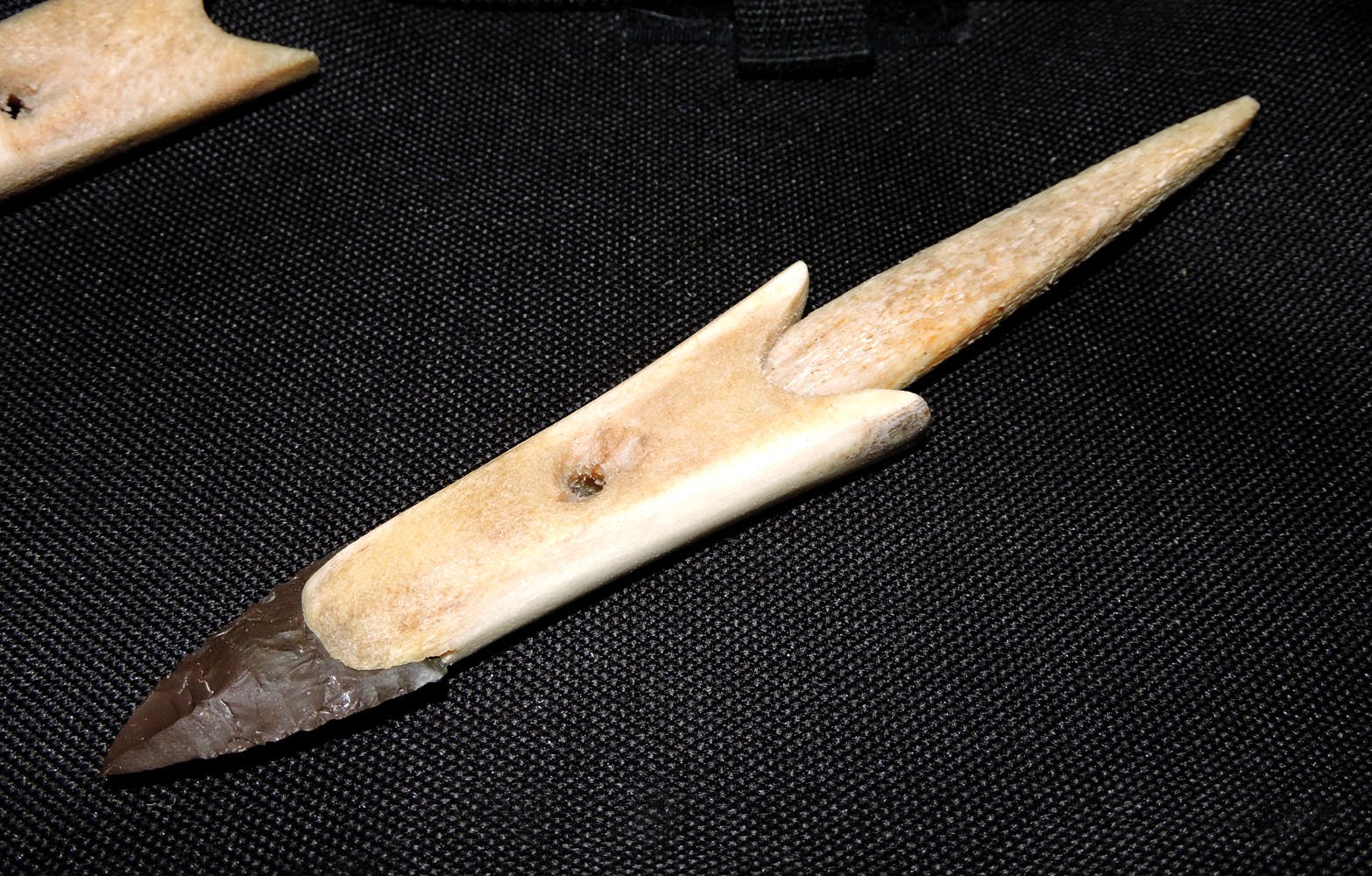 |
A nephrite BLT with a bone
brace in a wood handle |
I've enjoyed a few good weeks of making Palaeoeskimo reproductions lately. Palaeoeskimo artifacts are my favourite. The streak continues with a set of Dorset Palaeoeskimo hand tools for the Parks Canada interpreters to use in public programming at Port au Choix. The set includes several hafted burin-like tools (BLT) made from nephrite. Burin-like tools are small carving or incising tools for working antler, wood, bone, and ivory. The Dorset used a unique braced handle system for their burin-like tools that is similar to the way they
side-hafted microblades, although the brace on the BLT handle actually fits inside a groove in the wood handle so that it functions to help pinch the blade into the socket in a way that the microblade braces do not do. This is my first time hafting BLTs with this style of handle, so I'm excited to be trying something new.
 |
| Realizing that the brace fits inside the wood handle was a bit of an Aha! moment for me. After that things started to make a bit more sense and everything fell into place. |
 |
The notches indicate where sinew
lashing will be wrapped to secure
the parts together |
I must admit, I really didn't understand how the brace piece worked on a burin-like tool until I saw a very clearly labelled diagram in Claire Houmard's 2011 thesis on the organic tools from Foxe Basin:
CARACTÉRISATION CHRONO-CULTURELLE ET ÉVOLUTION DU PALÉOESQUIMAU DANS LE GOLFE DE FOXE (CANADA). The thesis is wonderfully illustrated, so even if you don't read French, there is a lot of information contained within it's photos and drawings for you to uncover. The drawing of the hafted BLT that made everything clear for me is on page 163. You can also view the artifact through the Canadian Museum of History's online artifact catalog,
here.
 |
| The Dorset used two part sockets on other tools, like harpoon shafts, knife handles, and microblade handles, but in most other cases that I'm aware of, the two part socket was a quicker, easier way to make a secure enclosed haft. Remember, the Dorset Palaeoeskimo people didn't use drills, so making a deep narrow socket in a handle would have been very difficult. Making the sockets in two parts simplified the process in most situations, but this one is different. It's a more complicated and time consuming solution to the problem of hafting a BLT blade than seems necessary. I think it must be related to how the tool is used. |
 |
The working edges and notches
on Dorset BLTs will be fairly
consistent within an assemblage,
but the bases of the tools will
be much more random. |
The nephrite BLT blades that the Dorset Palaeoeskimo folks were making in Newfoundland were ground and polished with a straight edge that could function like a side scraper that came to a sharp point at one corner for grooving and incising. They were only notched on one side, the same side as the working edge, which implies that the other side was backed into the handle or secured against a brace piece, like the one illustrated in Houmard's thesis. Brace pieces like this have been found by archaeologists working at Port au Choix and other sites around Newfoundland and Labrador.
 |
| I need three complete, hafted tools for the order, but I'm making a couple extras for myself and in case something goes wrong. |
Photo Credits: Tim Rast































